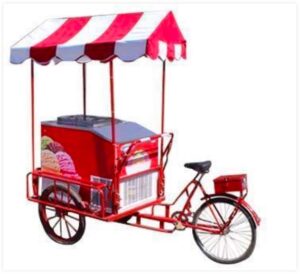Hidden Brain: Memory of Emotions vs. Emotional Memory
Anurag Vaish
Founder Finalmile Consulting & Mentza | Behavioral Sciences & Design Practitioner
Human decision making is as visible to us as an iceberg. So much of why we do what we do is hidden in our non-conscious brain and that we ourselves are unaware of the reasons behind our decisions.

The Mumbai Local Accident Management Case Study
Case in Point: 10 people get killed daily in Mumbai while trespassing railway tracks to cross over between east and west parts of the city. Not surprisingly, the authorities believed that most of these accidents are because trespassers are careless, often drunk, speaking on mobiles while they cross etc. I am sure people in general believed the same including those that may have had near-misses as well. It is a logical argument and possibly the only way to understand how one could be so foolish to challenge a loud, large, looming train. But that is where the Iceberg analogy comes into play.
The true reason as we discovered during the course of our design journey is
This misjudgement coupled with the fact that trespassing tracks only involves a few meters of walk, puts a lot of people in harm’s way, of which 10 odd get killed daily. How do we influence such decisions? please read here

This is just one case in point on how the biases, heuristics and logic of our decisions are hidden from our own conscious self.
Human Memory is highly unreliable
Human memory, for instance, which is an essential aspect in witness testimony, in research situations etc. is highly unreliable. Our memory is a constant reconstruction and not a reproduction or simple recall like we have in our computers. Every time one recalls a past incident, one is reconstructing it with our present beliefs and immediate context, thus distorting the original facts. In fact it is a much better representation of how we feel about an incident of the past than being a representation of what actually happened. One interesting aspect of human memory is Memory of Emotions vs. Emotional Memory.
Memory of emotions is primarily about how we emotionally feel when we really highly emotional incidences. For instance, if we recall an incidence when we crossed the road dangerously. At the time when the incident happened we could have felt scared. But when we recall it, we often might feel embarrassed or just shrug it aside.
Emotional Memory on the other hand is about how we get similarly emotional when the context of the original incident recurs. Remember movies like Karz or Om Shanti Om.
In one shopper marketing project, where we were promoting shopper engagement with Frozen Desserts (ice creams) in modern format stores, we had redesigned the freezers to look like the mobile Ice-Cream carts with bells etc. Much like how they were when they plied on our roads many years back and we so greedily looked at them. Similarly this very aspect of emotional memory can be deployed to influence human behaviours in situations like preventive health, safe driving, continuous learning and so on.

The more deeply that we understand the intricacies of human decision making, learn to go beyond the obvious which really is very little and often flawed, the more the chances that we are able to explain and influence this decisions positively.

